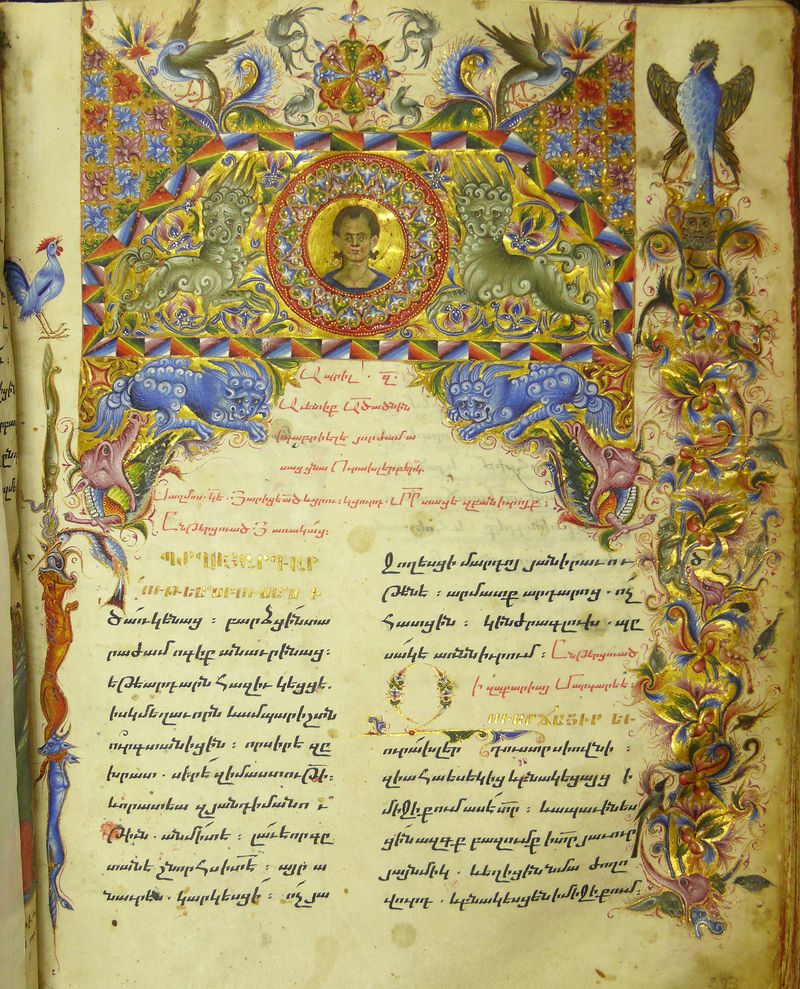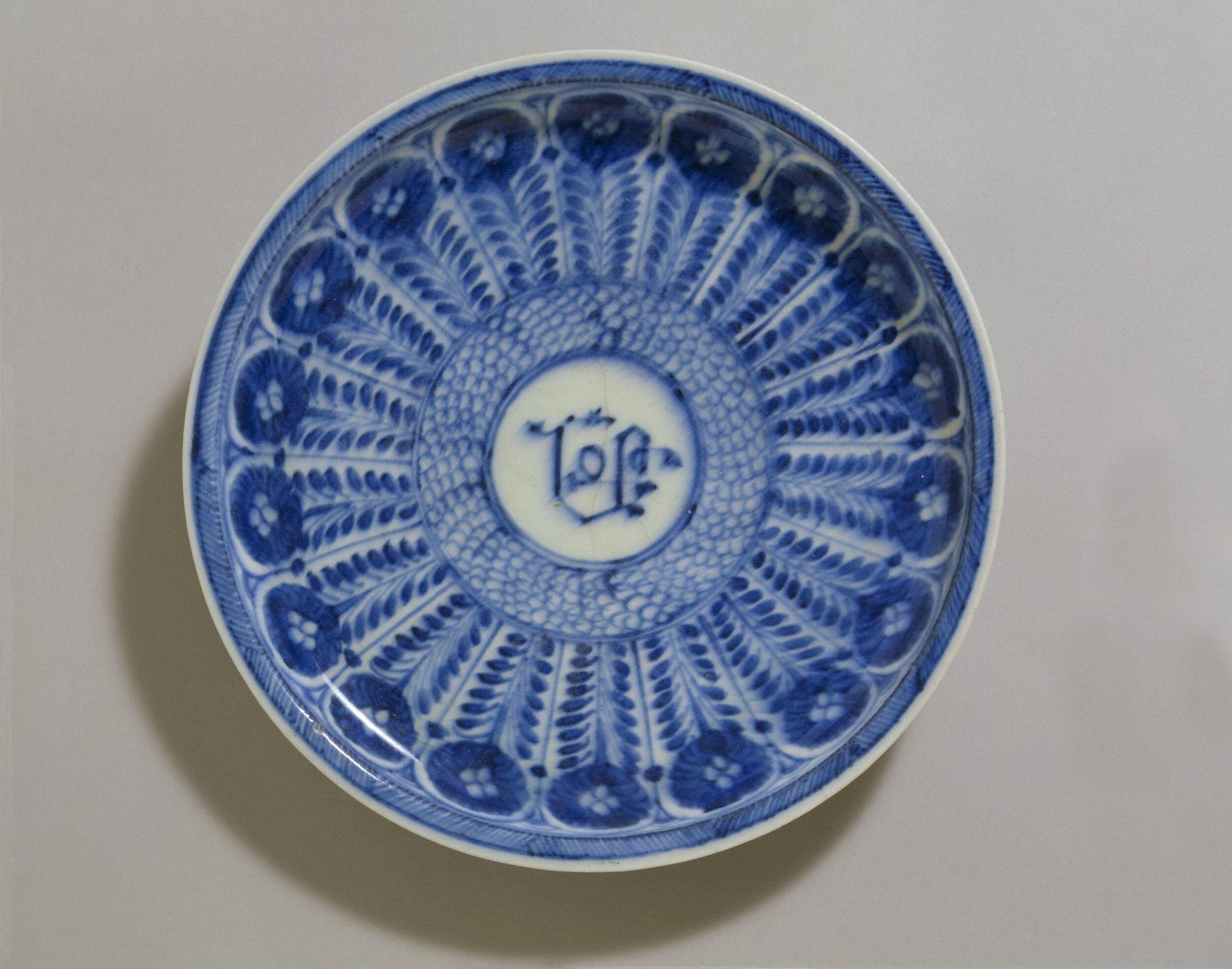Chinese dragons and heavenly dogs in the Armenian medieval manuscript
The elements perceived as emanating from Chinese art, such as “heavenly dogs”, “phoenix” and“dragon” motifs, made their appearance in Armenian manuscript illuminations in the second half ofthe thirteenth century. The context was royal Armenian patronage in the kingdom of Cilician duringyears when the small Mediterranean state was in direct alliance with the Mongols.The Lectionary of 1286 (Lectionary of Hethum II, Yerevan. Matenadaran MS 979) contains anorganically integrated group of ancient Chinese mythical creatures. Though neither the name of thescribe nor the artist of the Lectionary is preserved, we know Prince Hethum/Het’um (later king1289–1301) commissioned the manuscript.The Incipit page (fol.292r) displays
The Armenian “blue-and-white” inspired by Chinese art
The V&A Museum, London, hosts an early-seventeenth-century blue-and-white pottery samplethat is considered a part of a rare, small group of wares commissioned by or for members of theArmenian community living in New Julfa/Jugha, outside Isfahan, Iran. Being created circa 1700, itis painted in underglaze blue with the “Aster pattern” after a Chinese ornamental motif, and thecentre incorporating an Armenian merchant's monogram “NZT”, an abbreviation of “Nazaret”. There are a number of dishes painted with “Nazaret”, a name attributed to “Khawaje Nazar”(d.1636 [Kurdian]), who was the head of the Armenian community in New Julfa, or a descendent.The present dish both with its
The Chinese “Ming Bowl” found in Armenia
This bronze bowl was found by a farmer near the city of Gyumri, Armenia. It was created during thereign of the Chinese Xuande Emperor (1399-1435 CE, reigned from 1425 to 1435 CE) of MingDynasty (1368-1644 CE). The inscription in Chinese "年製宣德大明" ( pinyin "Nián zhì Xuāndé dàmíng") says "Made duringthe reign of Xuande of Great Ming". The artifact is visual evidence of the Armenian-Chinese socio-cultural ties developed through the Silk Road international trade routes. Photo courtesy: Ruben Giney
The Chinese perception of the Armenian merchant image
In 1944, Mathias Komor, a New York dealer (1909 - 1984), sold a Tang-dynasty (8thcentury BCE) small-scaled figurine (overall: 33.5 x 16.3 x 16.3 cm) to the Museum of FineArts, Boston, for $850. The current artifact is described in the MFA online collection as “AMan of West Asian type (probably an Armenian wine merchant) holding a leopard skinbottle”. It’s a bearded, large-eyed male figure with the aquiline nose (a Roman nose orhook nose) in the form of three-coloured glazed earthenware (sancai) with red slip. In the 8th century, people from across Eurasia headed to the Tang capital at Chang'an(modern Xi'an) to
Lavash as an art and in the art- from Minas Avetisyan to Kusama-influenced installation
By Ani Margaryan It’s noteworthy that lavash and its making process rarely come into sight as a focus forcontemporary art installations. We are fortunate to witness its employment as a basic material forgroundbreaking installation that occupies a whole room at 117 North Artsakh Avenue in Glendale,California. Being a substantial part of “My Relic”, a public artwork created by the female artistgroup “She Loves Collective”, every single item in the room, walls, sofa, laptop, table withcandlesticks, literally every object is made from lavash.In terms of repetitive motif coverage of the entire space, it evokes certain references to YayoiKusama’s compulsive use of polka








